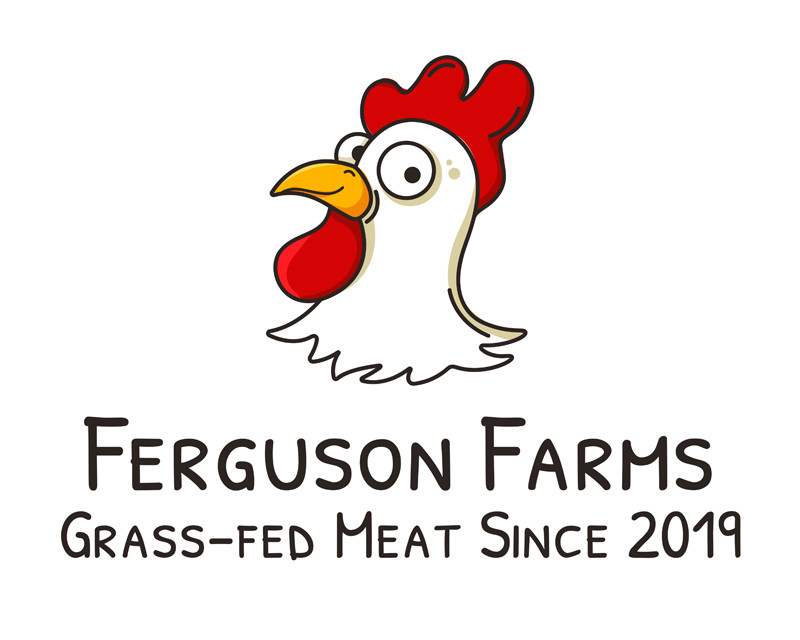Grass-fed Nose To Tail Eating: Everything You Need to Know - Liam McAuliffe M.T.S.
posted on
January 26, 2023
If crispy sweetbreads, kidney pie, and sesos (beef brain) tacos wet your chops, you’re on-trend with Nose-to-Tail eating– one of the hottest and healthiest culinary movements.
Though a revival of sorts in America, nose-to-tail eating is the standard in many countries around the world. At meat markets from South America to the Middle East and Asia, it’s common to see entire animals skillfully butchered and displayed to the delight of enterprising chefs and wise grandmothers alike.
Nose-to-tail is also the way our ancestors ate.
In this article, we’ll take a closer look at what nose-to-tail eating is, and the benefits it offers our health and the environment.
What is Nose-to-Tail Eating?
Eating only the muscle meat of animals is a recent dietary trend–and it’s confined to industrialized nations. Nose-to-tail eating means not only consuming the muscle but every other edible part of an animal.
Nose-to-tail eating:
- leaves nothing to waste
- maximizes nutrition
- respects the sources of our food
Nose-to-tail eating is traditional eating. And therefore it constitutes a dietary revival. Its flag bearers are curious chefs, artisan butchers, and carnivore dieters.
Going Nose-to-Tail is Eating Like Our Ancestors
Recent research tells us that our hunter-gatherer ancestors were hyper-carnivorous apex predators.
It wasn’t until the last few thousand years that some groups of humans began eating plants with regularity.
Contemporary research on the diets of existent hunter-gatherers shows that they still get on average between 50-70% of their calories from animal sources. With some societies getting up to 99%.
When we talk about “animal sources” we’re not mean lean cuts like filet mignon and chicken breast. We’re talking about parts like organs, cheeks, skin, and bone marrow.
In fact, traditional peoples would often discard lean muscle meat in order to focus on the organs–the most nutrient-dense parts of the animal.
Seminal researcher Weston A. Price made the following observation of Indians living in the Northern Canadian Rockies:
“I found the Indians putting great emphasis upon the eating of the organs of the animals, including parts of the digestive tract. Much of the muscle meat of the animals was fed to the dogs. … The skeletal remains are found as piles of finely broken bone chips or splinters that have been cracked up to obtain as much as possible of the marrow and nutritive qualities of the bones.” Nutrition and Physical Degeneration, 6th Edition, page 260.
Dr. Price discovered that traditional cultures that ate the whole animal (and who didn’t eat processed foods), were free of what is known as “the diseases of civilization. These include:
- Obesity
- heart disease
- hypertension
- type 2 diabetes
- epithelial cell cancers
- inflammatory diseases (including autoimmune diseases, bowel disorders, osteoporosis, infertility, and more)
The phrase “diseases of civilization” refers to how in first-world, wealthy countries, the way we eat and live causes us to die from these chronic diseases.
Top 8 Benefits of Nose-to-Tail Eating
So if most humans have always eaten nose-to-tail for most of history, and if the diseases that are killing more people around the globe are new and have to do with not eating this way, then all signs point to “Go!”
But for those of you who are still feeling squeamish, let’s take a look at a few top benefits that nose-to-tail eating has to offer.
1. Like-Supports-Like
The organ meats in a nose-to-tail diet contain very specific compounds that positively affect the corresponding organs in our own bodies.
For example, beef brain provides several newly discovered nutrients like phosphatidylserine, and sphingomyelin, brain cell activators, brain-derived neurotrophic factor (BDNF), and various other brain-boosting peptides.
Beef kidney contains rare amino acids that can make it easier for our own kidneys to do their jobs.
Beef heart offers an abundance of B vitamins that have a cardioprotective effect. Intake of these B vitamins supports healthy blood pressure and cholesterol levels, both keys to heart health.
Hepcidin, a peptide found in beef liver, helps the body absorb and process iron while offering antibacterial properties. Together these factors inhibit the ability of pathogens to adapt to our immune responses. It also fends off bacterial infections.
2. Increased Energy
The kidneys, liver, heart, and spleen are loaded with heme iron. This is iron in its most bioavailable form, meaning it’s easily absorbed and used by the body. This makes nose-to-tail eating especially beneficial for the 10 million Americans struggling with iron deficiency.
Iron deficiency is often the root cause of chronic fatigue and low energy. Nose-to-tail eating can reverse iron deficiency and restore your energy levels.
Organ meats are all fantastic sources of coenzyme Q10 (CoQ10) which has been shown to boost energy levels.
3. Boosts the Immune System
Nose-to-tail eating provides your body with bioavailable forms of vitamins A, C, D, and K2–all critical vitamins for healthy immune function.
If your N-to-T diet includes the spleen, you’re doing your immune system a particular service.
In fact, spleen is so potent when it comes to immune support that it’s often offered in the extract to people suffering from low white blood cell counts and cancer. [8]
It’s worth noting that if you’re on a carnivore diet organ meats are one of the only animal-based sources of vitamin C.
4. Promotes Weight Loss
When you eat nose-to-tail you’re getting significant helpings of the fats found in organ meats.
These nose-to-tail fats are especially high in the saturated fatty acid called stearic acid.
Research on stearic acid reveals that it’s associated with improved mitochondrial function, reduced body fat, and increased weight loss.
Nose-to-tail eating also provides your body with a rare compound called Liver Expressed Antimicrobial Peptide (LEAP-2). LEAP-2 can reduce hunger and weight gain. It also balances blood sugar, especially during periods when your calories are restricted.
This makes nose-to-tail eating a fantastic combination with intermittent fasting practices.
5. Replaces Depleted Nutrients
Most people rely on fruits and vegetables to get their vitamins and minerals.
What most people don’t know is that plants contain hundreds of plant toxins that can cause inflammation and disease, along with antinutrients that can leach nutrients from your body.
At the same time, over the last 50 years, the nutrient contents of most fruits and vegetables are in sharp decline.
And if you think multivitamins will fill the void, think again.
As Dr. Eliseo Guallar, from Johns Hopkins School of Public Health explains that the likelihood that multivitamins have tangible health benefits is “very small — and also we have no clear proof yet of such benefit.”
All these findings confirm what traditional cultures have known since time immemorial: Nose-to-tail eating is the key to providing our bodies with the most bioavailable nutrients in perfect proportions for our health and longevity.
6. Eating Nose to Tail Helps Balance Out Amino Acids
Muscle meats are high in an essential amino acid called methionine, which can raise homocysteine levels. Homocysteine has been associated with heart disease and cancer.
As an example of nature’s wisdom, the amino acid glycine found in connective tissue is protective against methionine imbalance. At the same time, organ meats are loaded with vitamin B6, vitamin B12, choline, folate, and betaine which support your body’s ability to break down homocysteine.
One of the best ways to get more glycine is from bone broth. It’s also a great “doorway” to nose-to-tail food–providing maximum whole-animal benefits with the least amount of preparation and taste adaptation.
Nose-to-tail For Keto and Carnivore
When going keto and carnivore there’s a tendency to focus on the meats we’re familiar with. These tend to be lean muscle.
However, the key to a well-formulated keto and carnivore diet is to get enough fat and micronutrients.
Keep in mind that keto and carnivore are both extremely low-carb diets that switch your body from using carbs for fuel to breaking down fatty acids into energy molecules called ketones.
This means you’ll need to get around 80% of your total calories from fat!
Excellent nose-to-tail keto fats include tallow and lard. While organ meats like liver, kidney, sweetbreads, and beef heart will give your body an abundance of vitamins and minerals.
And you won’t have to eat much of them to get their benefits. You can treat organ meats like a true multivitamin, consuming only a few ounces each week.
Nose-to-Tail Eating: The Bottom Line
Nose-to-tail eating is a nutritional and environmental reckoning.
It takes into account how our Standard American Diet of processed junk is the root cause of most of our diseases and a key factor in the degradation of our environment.
Eating nose-to-tail is a way to align ourselves with ancestral ways of eating. It’s no coincidence that whole animals provide all the essential nutrients we need at perfect proportions and in the most bioavailable forms.
Bon appetit!




